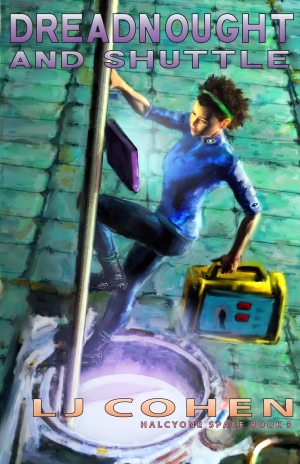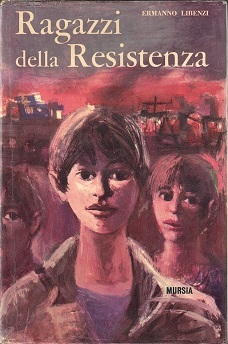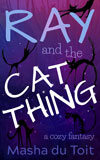Today I have a guest! 🙂 Writer L J Cohen has kindly let me interview her. She’s just launched her latest book, DREADNOUGHT AND SHUTTLE, book 3 of the Halcyone Space series of science fiction space opera adventures that began with DERELICT and continued with ITHAKA RISING.
Here’s the book description:
When a materials science student gets kidnapped, she’s drawn into a conflict between the young crew of a sentient spaceship, a weapons smuggling ring, and a Commonwealth-wide conspiracy and must escape before her usefulness as a hostage expires.
Lisa has agreed to give away an ebook copy of one of her books right here on my blog. To participate, leave a comment stating which of her books you’d like, if you win the draw 🙂 We’ll pick a winner in 7 day’s time. (If you don’t know which book to pick, see below! There is a short description of each.)

Do you write for a particular age group? Who is your ideal reader?
When I started writing, I thought of myself as writing YA novels because so many of my protagonists were older teens. But my stories are transitioning to less true coming of age tales than speculative fiction stories that have some young adult characters. My idea reader is a teen or adult who enjoys character-based adventures in fantasy or futuristic settings. Given the emotional stakes, I wouldn’t recommend most of my books to readers younger than 12, even if they are strong readers, though that is something I leave up to parents/guardians to decide.
Which of your books would you recommend a reader should start with? What is it about?
By the time this gets posted, I will have six novels published. There are three possible entry points to my work: the standalone urban fantasy FUTURE TENSE, THE BETWEEN, book 1 of my fantasy/fae changeling series (Changeling’s Choice), or DERELICT, book 1 of my SF/Space Opera series (Halcyone Space). However, I do attempt to write my series novels in such a way that readers can start anywhere and still have a fully enjoyable experience.
In FUTURE TENSE, a 17 year old foster kid struggles to keep the people around him safe from the danger he glimpses in his prescient visions. THE BETWEEN is the story of what happens when Oberon and Titania pick the wrong changeling to become a pawn in their war and that young girl clings to her stubborn humanity. In DERELICT, a group of teens stranded on a sentient spaceship must work together or risk being killed when the ship’s AI wakes believing it’s still fighting the war that damaged it decades ago.
(You can find all of these books at Lisa’s Amazon Author page)
What qualities do you like using in your characters?
That’s a good question! I like to give my characters traits that have both positive and negative features. For example, Ro Maldonado, the main character in DERELICT and Lydia Hawthorne, the main character in THE BETWEEN both have the traits of stubbornness/persistence. Depending on circumstances, this is either a good thing or a very bad thing!
Jem Durbin, also from the Halcyone Space novels, is curious and creative. While he’s great at problem solving, he doesn’t have the maturity to know that sometimes asking questions can be dangerous. It lands him in some very hot water in ITHAKA RISING. Matt Garrison, from FUTURE TENSE has an almost overdeveloped sense of responsibility. While he never runs away from owning his problems, he also doesn’t let himself rely on others or ask for help, which is nearly his undoing.
I think if a character has only positive or negative character traits, it makes for boring reading.
Some people believe that it’s important that a book have a message beyond just the story itself. How do you feel about that?
I don’t think you can avoid imbuing your writing with messages – writing is only partly a conscious process and our subconscious mind is a very tricky bastard. However, I don’t start out trying to embed a particular message in my writing. Do my stories have a message beyond that of the story itself? I’m sure they do. And those messages are probably as much a result of what I put into the story as what the reader reads into it. I do think I have recurrent motifs and themes that show up in all of my work: identity, trust, and choice. Others don’t get to choose your identity. Trust starts with trusting yourself before you can trust others. And choices made out of fear are almost never the right ones. I’d love to know what messages others see in my work.
Is there anything that you have a “chip on the shoulder”about as a writer?
Stories that rely on tricking the reader to work. I hated The Life of Pi. It was beautifully written, immersive, original, and magical. All up to the final chapter where the author basically popped out and said ‘Ha, tricked you. Aren’t I clever?’ It was one of those ‘and it was all a dream’ endings which completely break my trust in the narrative and in the author. I haven’t read a single other word Yan Martell has written.
What are you reading at the moment? Is it any good?
I’m currently reading several manuscripts for critique and can’t name them. The three last published books I read were Aftershock, Rick Wayne’s episode 5 of The Minus Faction (loved it!), James S.A. Coreys’s Abaddon’s Gate (very good), and Audrey Faye’s Grower’s Omen (loved it!).
I’ve come to a place in my leisure reading that if I am not enjoying a story, I stop reading it. Life’s too short and there are too many books out there. And just because I abandon a book, it doesn’t mean it’s not good, just that I didn’t really enjoy it. There is so much subjectivity in what makes a book good and what I love may not be what someone else does.
Thank you for inviting me to your blog!
More about Lisa:
LJ Cohen is a novelist, poet, blogger, ceramics artist, and relentless optimist. After almost twenty-five years as a physical therapist, LJ now uses her anatomical knowledge and myriad clinical skills to injure characters in her science fiction and fantasy novels. She lives in the Boston area with her family, two dogs, and the occasional international student. DREADNOUGHT AND SHUTTLE (book 3 of the SF/Space Opera series Halcyone Space), is her sixth novel. LJ is a member of SFWA, Broad Universe, and the Independent Publishers of New England.
Some links to LJ Cohen:
Homepage: http://www.ljcohen.net/
Blog: http://ljcbluemuse.blogspot.com/
Newsletter: http://www.ljcohen.net/mailinglist/mail.cgi/list/bluemusings
Google+: https://www.google.com/+LisaCohen
Goodreads: https://www.goodreads.com/author/show/5305326.L_J_Cohen
Facebook: http://www.facebook.com/ljcohen
Twitter: @lisajanicecohen





























Recent Comments